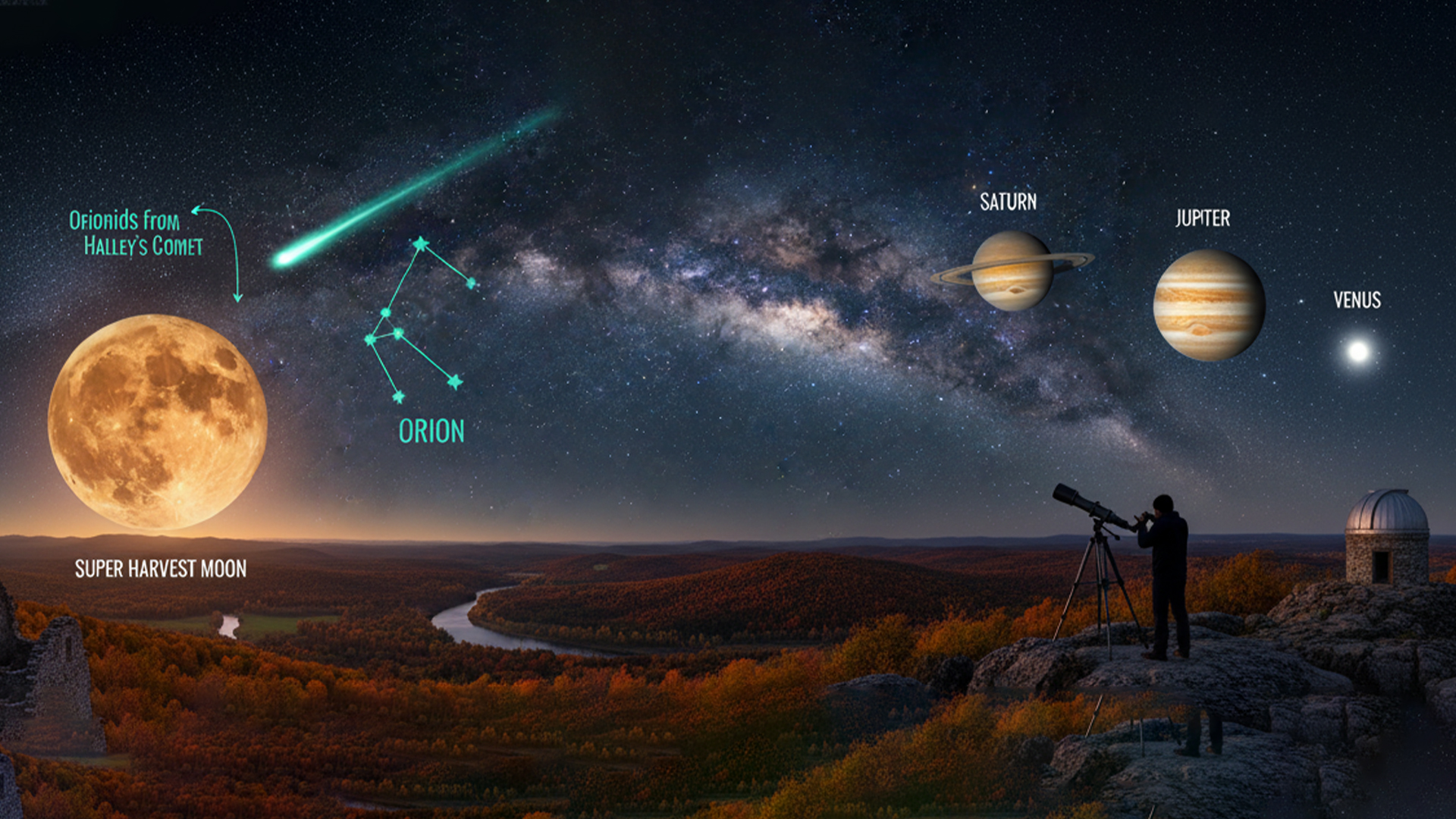As autumn settles in, October 2025 promises a sky brimming with cosmic wonders. From a luminous supermoon to meteor showers that paint the night with streaks of light, this month offers numerous opportunities for skywatchers to indulge in the beauty of the universe.
Super Harvest Moon: October 6
The month kicks off with the Super Harvest Moon on October 6. This full moon, appearing larger and brighter than usual, occurs when the moon is near its perigee, the closest point to Earth. Traditionally, the Harvest Moon rises closest to the autumn equinox, providing farmers with extended evening light to gather crops. This year’s timing makes it a perfect occasion for stargazers to witness its grandeur.
Draconid Meteor Shower: October 6–10
Peaking on the evenings of October 7 and 8, the Draconid meteor shower offers a spectacle for those with clear skies. Originating from the comet 21P/Giacobini-Zinner, this shower is known for its unpredictability. While it typically produces around 10 meteors per hour, past events have seen bursts of over 1,000 meteors in a short span. Observers can look towards the Draco constellation to catch these fleeting meteors.
Mercury’s Evening Appearance: October 5
On October 5, Mercury will make one of its best evening appearances of the year. As the smallest planet in our solar system, Mercury can be challenging to spot. However, on this date, it will be positioned favorably just after sunset, offering a brief window for observers to catch a glimpse of this elusive planet.
Orionid Meteor Shower: October 21–22
The Orionid meteor shower, a product of Halley’s Comet, peaks on October 21–22. During its peak, observers can expect up to 20 meteors per hour, with the meteors radiating from the constellation Orion. The combination of a new moon and the shower’s peak provides optimal conditions for viewing.
Comet C/2025 R2 (SWAN) and C/2025 A6 (Lemmon): October 20–23
A rare celestial event occurs between October 20 and 23 when two bright comets, C/2025 R2 (SWAN) and C/2025 A6 (Lemmon), will be visible in the night sky. Both comets are expected to reach a magnitude of 4, making them potentially visible to the naked eye under dark skies. Their simultaneous appearance, coinciding with the Orionid meteor shower, offers a unique opportunity for skywatchers.
Ceres at Peak Brightness: October 2
Dwarf planet Ceres reaches its peak brightness on October 2. Located in the asteroid belt between Mars and Jupiter, Ceres is the largest object in that region. While it requires a telescope to view, its peak brightness makes it a noteworthy event for amateur astronomers.
Saturn’s Close Approach: October 5
On October 5, Saturn will be positioned favorably for observation. As the sixth planet from the Sun, Saturn’s iconic rings make it a favorite among stargazers. This close approach provides an excellent opportunity to observe the planet’s features through telescopes.
New Moon: October 21
The new moon on October 21 offers the darkest skies of the month, ideal for observing deep-sky objects like galaxies and nebulae. Without the moon’s light pollution, the night sky becomes a canvas for the cosmos.
First Quarter Moon: October 29
Rounding off the month, the first quarter moon on October 29 provides a balanced illumination of the lunar surface. It’s an excellent time for lunar observations, as the shadows cast by the sun highlight the moon’s craters and maria.
As October unfolds, the night sky becomes a theater of celestial events. Whether you’re a seasoned astronomer or a casual observer, this month offers numerous opportunities to marvel at the wonders above. Remember to find a dark spot away from city lights, bring a comfortable chair, and enjoy the cosmic show.






